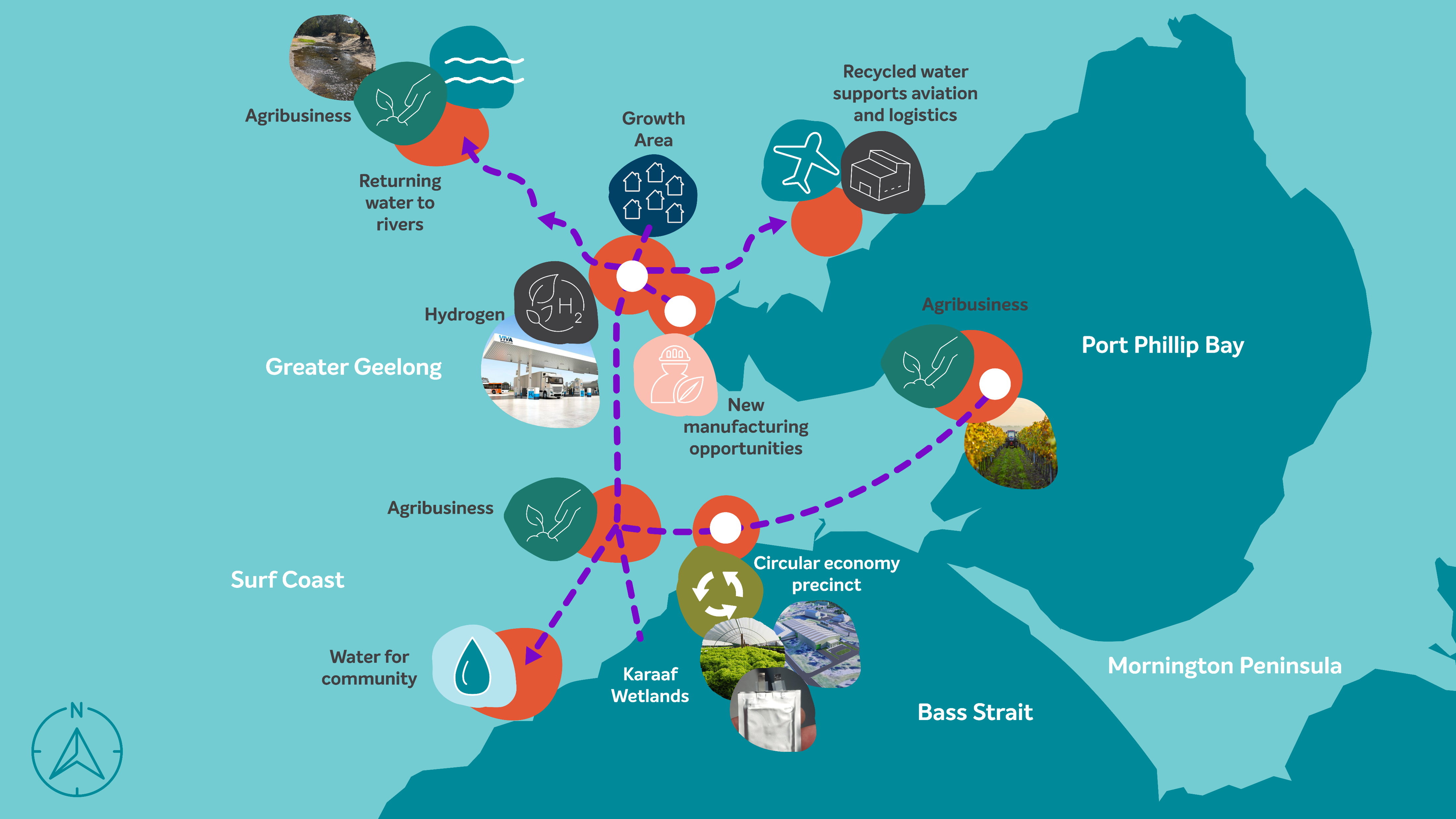Water and waste
Alternative Water Grid
Why do we need it?
Demand for water continues to rise, and our rainfall-dependent sources are declining.
The Barwon region’s population is expected to increase from 370,000 to more than 500,000 over the next 15 years. Amid this population growth, our rivers are drying.
We’ve experienced a 30 per cent – 50 per cent drop in inflows to our catchments over the last 20 years. We’re planning for the total amount to halve again over the next 40 years.
While the Greater Melbourne water grid supplements local water reservoirs, investment in local water recycling will help reduce pressure on the drinking water supply.
What is the alternative water grid?
An innovative and next-generation network that would enable us to manufacture and move large volumes of recycled water and treated stormwater across the region.
It will support investment in new housing, agriculture, horticulture and industrial ventures, and create healthier environments and communities.
What are the benefits?
The Alternative Water Grid has major economic, social, environmental and cultural benefits.
It will help green our nature strips and public spaces, irrigate sports and recreation areas, and create cooler, more liveable suburbs. It will help grow the food that we need at scale and enable established and new industries to expand and flourish.
The grid will also preserve natural drinking water supplies from waterways, so Barwon Water can return water to the flow-stressed Moorabool and Barwon rivers and Traditional Owners.
The untapped potential
Black Rock, on the Bellarine coast, is Barwon Water’s innovative precinct.
It is here that we create recycled water, renewable energy and organic fertilisers. In the future, with the planned Regional Renewable Organics Network, it will produce biogas and biochar.
While the recycled water supports a range of customers on the Bellarine and Surf Coast hinterland, much of it goes to waste, with 26 billion litres sent to sea each year.
Long-term plan for how we make and move water
Barwon Water has a bold aim of converting 100 per cent of its wastewater, and much of its stormwater, into valuable resources.
The Alternative Water Grid would be delivered in stages, with a range of projects planned.
These would support:
Housing
Key Alternative Water Grid project - North West water recycling facility
The Northern and Western Geelong Growth Areas are set to accommodate 40,000 blocks, which will house about 110,000 residents.
We are working with other key stakeholders to ensure the area is ready to use every drop of water it captures, from when the first building is pegged out.
The supply of Class A recycled water to these homes for non-potable purposes is key to our region’s future water security.
While homes in Armstrong Creek and Torquay North already have the purple pipes to access Class A recycled water, we want to expand that concept on a much larger scale.
Industry
Key Alternative Water Grid project - Recycled water for northern Geelong
The Alternative Water Grid could support ventures that heavily rely on water such as hydrogen production, waste/resource recovery industries and data centres.
There are also sustainable aviation fuels, green fertilisers, clean energy technology, batteries and carbon fibre.
Agribusiness
Key Alternative Water Grid project - Protecting the Karaaf and growing the Surf Coast hinterland
Recycled water is already accessed and used by producers on the Bellarine and in the Surf Coast Hinterland.
The grid has the potential to expand on existing initiatives, such as the Recycled Water on the Bellarine project. www.barwonwater.vic.gov.au/about-us/news-and-events/news/boosting-recycled-water-supply
Investments so far
The Victorian Government has invested more than $2.9 million through the Integrated Water Management Program, for planning and research to inform the development of this network. www.barwonwater.vic.gov.au/water-and-waste/integrated-water-management
Barwon Water has delivered this pre-emptive work in collaboration with state and local government, Traditional Owners and the Corangamite CMA.
The Australian Government has provided $1.9 million, via the Urban Rivers and Catchment funding, to protect and improve the ecological condition of Karaaf Wetland.
It also provided $5.5 million, through the National Water Grid Fund, to facilitate the upgrade of the Portarlington Water Reclamation Plant.

Alternative water grid map.